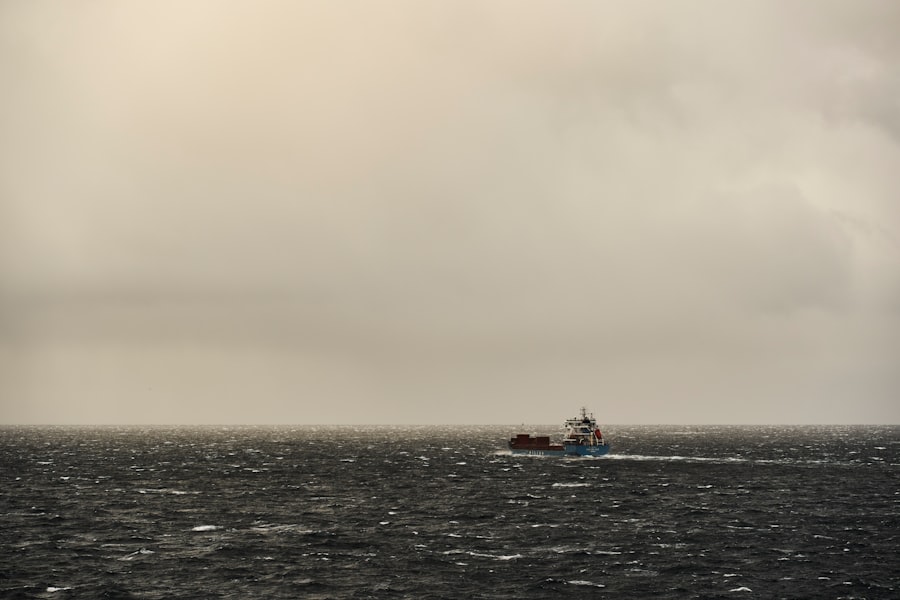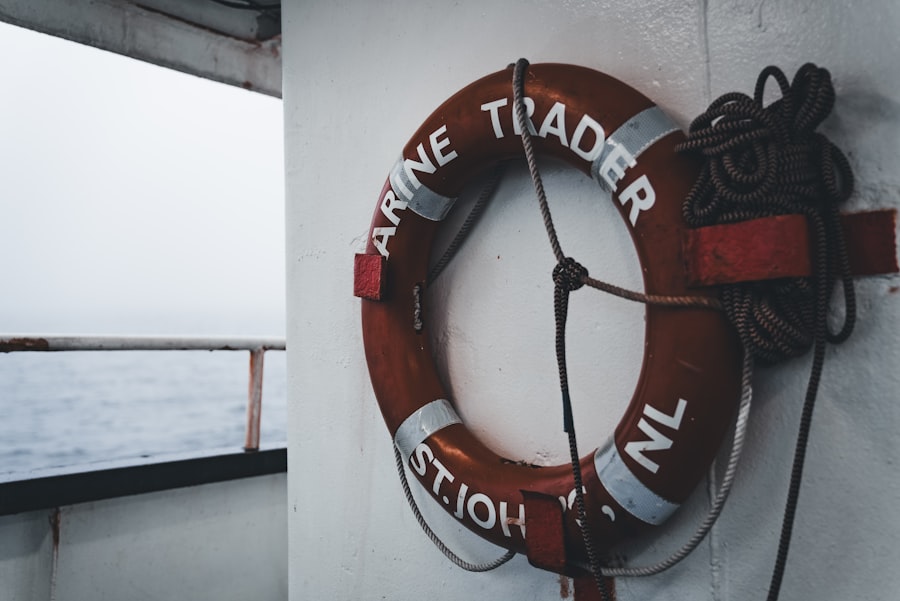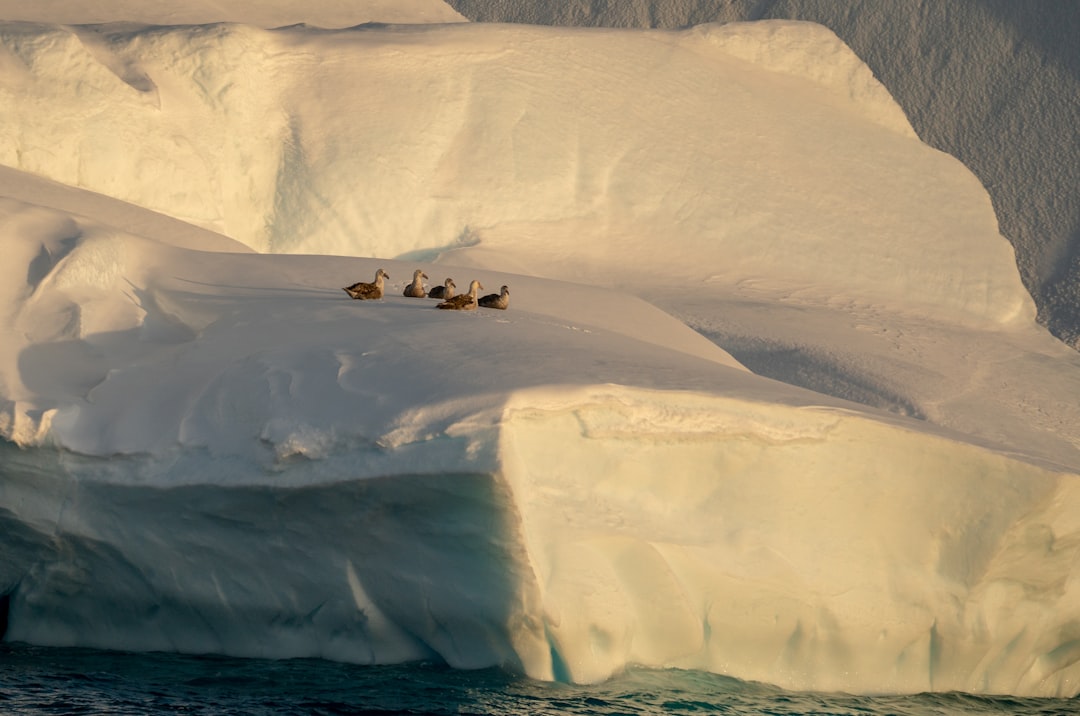The Drake Passage, a body of water situated between the southern tip of South America and Antarctica, is renowned for its tumultuous seas and unpredictable weather. Named after the English explorer Sir Francis Drake, who navigated these waters in the late 16th century, the passage serves as a critical maritime route for vessels traveling to and from the Antarctic region. Its strategic location not only connects the Atlantic and Pacific Oceans but also plays a significant role in global oceanic currents and climate patterns.
The Drake Passage is often described as one of the most challenging maritime routes in the world, attracting adventurers, researchers, and tourists alike. Navigating the Drake Passage is not for the faint of heart. The waters are notorious for their rough conditions, with waves that can reach heights of over 30 feet.
This unpredictability has earned the passage a reputation as a rite of passage for sailors and explorers. Despite its dangers, the Drake Passage remains a vital corridor for scientific research and exploration, as well as a popular route for cruise ships and expedition vessels seeking to explore the wonders of Antarctica. The allure of its wild beauty and the promise of encountering unique wildlife draw many to brave its treacherous waters.
Key Takeaways
- Drake Passage is a treacherous body of water located between the southern tip of South America and the northern tip of Antarctica.
- The passage is known for its extreme weather conditions, including strong winds and rough seas, making it one of the most challenging maritime routes in the world.
- Several historical incidents and disasters have occurred in the Drake Passage, highlighting the dangers posed by its unpredictable nature.
- The region is home to diverse wildlife and environmental hazards, making it crucial for travelers and expeditions to take necessary precautions.
- Despite its challenges, the Drake Passage plays a significant role in scientific research and exploration, attracting researchers and explorers from around the world.
Geographic and Weather Conditions
Geographically, the Drake Passage spans approximately 600 kilometers (370 miles) at its widest point, with depths reaching over 4,000 meters (13,000 feet). The passage is flanked by Cape Horn to the north and the South Shetland Islands to the south, creating a funnel-like effect that intensifies the winds and waves. The confluence of the Atlantic and Pacific Oceans in this region leads to a unique set of oceanographic conditions that contribute to its notorious reputation.
The cold waters from Antarctica collide with warmer currents from the north, resulting in turbulent seas that can change rapidly. Weather conditions in the Drake Passage are equally unpredictable. Storms can develop with little warning, bringing fierce winds and heavy precipitation.
The region experiences a subpolar climate characterized by strong westerly winds known as the “Roaring Forties,” which can create hazardous sailing conditions. Mariners must be prepared for sudden shifts in weather, as clear skies can quickly give way to dense fog or violent storms. This volatility not only poses challenges for navigation but also impacts the safety of vessels traversing these waters.
Historical Incidents and Disasters

The Drake Passage has witnessed numerous historical incidents and maritime disasters that underscore its perilous nature. One of the most infamous events occurred in 1914 when Ernest Shackleton’s Endurance became trapped in pack ice while attempting to reach Antarctica. The ship was ultimately lost, leading to a harrowing survival story that has become legendary in maritime history.
Shackleton’s expedition exemplifies the dangers faced by those who venture into these treacherous waters, highlighting the need for careful planning and respect for nature’s power. Another notable incident took place in 1989 when the cruise ship M.S. Explorer sank after striking an iceberg in the Drake Passage.
This disaster resulted in a dramatic rescue operation involving nearby vessels and highlighted the risks associated with tourism in this remote region. Such incidents serve as stark reminders of the unpredictable nature of the Drake Passage and have prompted increased scrutiny regarding safety measures for vessels operating in these waters.
Wildlife and Environmental Hazards
| Category | Metrics |
|---|---|
| Wildlife Population | Number of species |
| Environmental Hazards | Frequency of natural disasters |
| Conservation Efforts | Area of protected land |
Despite its treacherous reputation, the Drake Passage is home to a diverse array of wildlife that thrives in its cold waters. The nutrient-rich currents support a vibrant ecosystem, attracting various species of marine life, including seals, whales, and seabirds. Notable inhabitants include humpback whales, orcas, and albatrosses, which are often spotted by those traversing the passage.
The presence of such wildlife adds an element of wonder to the journey, drawing nature enthusiasts and researchers eager to observe these magnificent creatures in their natural habitat. However, environmental hazards also pose significant threats to both wildlife and human activities in the Drake Passage. Climate change has led to shifts in ocean temperatures and currents, impacting marine ecosystems and migratory patterns.
Additionally, increased shipping traffic raises concerns about pollution and potential oil spills that could devastate local wildlife populations. As interest in Antarctic tourism grows, it becomes increasingly important to balance exploration with conservation efforts to protect this fragile environment.
Navigation Challenges
Navigating the Drake Passage presents unique challenges that require skillful seamanship and advanced technology. The combination of strong currents, shifting winds, and unpredictable weather creates a complex navigational environment that can be daunting even for experienced mariners. Vessels must be equipped with reliable navigation systems and weather forecasting tools to ensure safe passage through these turbulent waters.
Moreover, the presence of icebergs poses an additional hazard for ships traversing the passage. Icebergs calving from glaciers can drift into shipping lanes, creating potential collision risks. Mariners must remain vigilant and employ ice detection technologies to avoid these hazards.
The challenges of navigation in the Drake Passage underscore the importance of thorough training and preparation for those who dare to navigate its waters.
Impact on Travel and Expeditions

The challenges posed by the Drake Passage have significant implications for travel and expeditions to Antarctica. For many travelers, crossing this body of water is an integral part of their journey, often described as both exhilarating and daunting. Cruise lines and expedition companies have developed specialized itineraries that account for the unpredictable nature of the passage, allowing travelers to experience its beauty while prioritizing safety.
However, adverse weather conditions can lead to delays or cancellations of planned voyages, impacting travelers’ experiences. It is not uncommon for vessels to encounter rough seas that necessitate changes in course or itinerary adjustments. While these challenges may deter some travelers, others view them as part of the adventure, embracing the unpredictability that defines the Drake Passage.
Scientific Research and Exploration
The Drake Passage is not only a challenging maritime route but also a vital area for scientific research and exploration. Oceanographers and climate scientists study this region to better understand global ocean currents and their impact on climate patterns. The confluence of warm and cold waters creates a unique environment for research on marine ecosystems and biodiversity.
Additionally, researchers often use the passage as a gateway to Antarctica for various scientific expeditions. Studies on glaciology, marine biology, and climate change are conducted by teams who rely on access through these waters to reach their research sites. The importance of the Drake Passage as a conduit for scientific exploration cannot be overstated; it serves as a critical link between human inquiry and one of Earth’s last frontiers.
Safety Measures and Precautions
Given its reputation for treacherous conditions, safety measures are paramount for vessels operating in the Drake Passage. Modern ships are equipped with advanced technology designed to enhance navigation and improve safety during transit. This includes sophisticated radar systems, GPS navigation tools, and real-time weather monitoring capabilities that allow crews to make informed decisions while at sea.
Moreover, training programs for crew members emphasize emergency preparedness and response protocols specific to navigating challenging waters like those found in the Drake Passage. Regular drills ensure that all personnel are familiar with safety procedures in case of adverse conditions or emergencies. These precautions are essential not only for protecting crew members but also for safeguarding passengers who embark on journeys through this formidable passage.
Importance of Drake Passage
The significance of the Drake Passage extends beyond its role as a challenging maritime route; it is also crucial for global oceanic circulation and climate regulation. The passage facilitates the movement of water masses between oceans, influencing weather patterns far beyond its immediate vicinity. Understanding this dynamic is essential for scientists studying climate change and its effects on marine ecosystems.
Furthermore, the Drake Passage serves as a vital corridor for international shipping routes connecting various parts of the world with Antarctica. As interest in Antarctic tourism continues to grow, maintaining safe navigation through these waters becomes increasingly important for both economic and environmental reasons. The passage’s unique geographical features make it an area worthy of continued study and protection.
Future Outlook and Potential Solutions
Looking ahead, addressing the challenges posed by the Drake Passage will require collaborative efforts among governments, researchers, and industry stakeholders. As climate change continues to impact oceanic conditions, ongoing research will be essential to monitor changes in marine ecosystems and develop strategies for sustainable tourism practices. Innovations in ship design may also play a role in enhancing safety during transit through these waters.
Advances in hull design, propulsion systems, and navigation technology could improve vessel performance in rough seas while minimizing environmental impacts. Additionally, increased awareness among travelers about responsible tourism practices can help protect this fragile ecosystem while allowing people to experience its wonders.
Navigating the Treacherous Waters
Navigating the Drake Passage is an endeavor fraught with challenges yet rich with opportunities for exploration and discovery.
As adventurers continue to brave its depths, they are reminded of nature’s power and beauty—a duality that defines this remarkable body of water.
The future of travel through the Drake Passage hinges on balancing exploration with conservation efforts aimed at protecting its unique environment. By fostering collaboration among stakeholders and embracing innovative solutions, it is possible to navigate these treacherous waters safely while preserving their ecological integrity for generations to come. Ultimately, the Drake Passage stands as a testament to humanity’s enduring spirit of adventure amidst nature’s formidable challenges.
The Drake Passage is notorious for its treacherous waters, making it one of the most dangerous sea routes in the world. This perilous stretch of ocean, located between the southern tip of South America and Antarctica, is infamous for its unpredictable weather, strong currents, and massive waves.
For more insights into the dangers of the Drake Passage and other geographical phenomena, you can explore a related article on MyGeoQuest. This resource provides valuable information on various geographical topics, enhancing our understanding of the natural world’s complexities.
WATCH NOW! Drake Passage: Earth’s Deadliest Waters Revealed
FAQs
What is the Drake Passage?
The Drake Passage is the body of water between the southern tip of South America and the northern tip of the Antarctic Peninsula. It connects the Atlantic and Pacific Oceans.
Why is the Drake Passage dangerous?
The Drake Passage is known for its rough seas and strong winds, making it one of the most treacherous stretches of water in the world. The convergence of the Atlantic, Pacific, and Southern Oceans creates intense weather patterns and rough seas, leading to hazardous conditions for ships and other vessels.
What are the specific dangers of the Drake Passage?
The Drake Passage is prone to extreme weather conditions, including powerful storms and high winds. The combination of these factors can lead to rough seas, large waves, and unpredictable conditions, making navigation difficult and potentially dangerous.
Are there any other risks associated with the Drake Passage?
In addition to the challenging weather and sea conditions, the remote location of the Drake Passage means that any emergency or rescue operations can be difficult and time-consuming. This further adds to the risks associated with traversing this passage.
Are there any safety measures in place for crossing the Drake Passage?
Ships and vessels crossing the Drake Passage are equipped with advanced navigation and communication systems to help mitigate the risks associated with the passage. Additionally, experienced captains and crew members are essential for safely navigating these treacherous waters.
